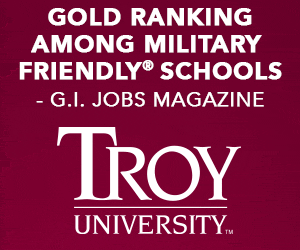With more than 26 years of experience as a senior military leader under his belt, retired Capt. William Toti should’ve been set for success when he transitioned out of the Navy and into a civilian career in 2006. Still, he struggled to break into civilian employment despite taking everything the Transition Assistance Program taught him as gospel.

Toti’s resume includes serving as the commanding officer on nuclear submarine USS Indianapolis and for a squadron of six submarines based at Pearl Harbor. On land, he held various positions over three tours at the Pentagon to include special assistant to the vice chief of naval operations and deputy director of the CNO’s War Plans Cell, Deep Blue.
Thankfully, Toti found success and ultimately accepted a position as the CEO of Sparton Corporation. However, he also realized the challenges he faced in his transition — and their implications on his family — weren’t unique in the military community.
“When your transition doesn’t go well, it adds stress to an already stressful event,” Toti said. “It took years for me to figure out that nearly everything I’d been told was wrong. And that would be bad enough, except that other folks coming into the industry from active duty were making the same mistakes. If you’re trained well and ready for that transition, you have a chance to reduce the amount of stress you are going to expose yourself and your family to.”
In his new book “From CO to CEO: A Practical Guide for Transitioning from Military to Industry Leadership,” Toti aims to do just that. Readers won’t find prescribed lesson plans to teach transitioning. They will, however, learn from Toti’s firsthand experiences as a former transitioning military member and a senior executive who once reviewed resumes and hired for companies in the defense industry.
There was no intention to write a book, but it seemed practical to consolidate all the advice Toti said he would give to members who reached out and asked how he made it through. Here are some tips:
- Military leadership doesn’t translate to leadership in the industry.
- Come in trainable and accept you’re starting over.
- Industry culture varies from company to company.
- Be aware — the sentiment “military people are freeloaders” isn’t common but does exist.
Topics include climbing the executive ladder, along with the central theme of how to translate leading service members to professionals in a business. “CO to CEO” tends to be geared toward senior enlisted (E-7 or above), as it’s written from the perspective of a retired commissioned military leader. However, Toti says it does provide insight and value for junior enlisted and degreed individuals.
“Leadership is hard, but it’s even harder when the people you’re leading can actually quit,” Toti said. “I’ve had a lot of ‘we do it a certain way’ folks who transitioned very badly. They’ll come into a position with the understanding ‘this is how leaders lead’ and that’s when people start bailing on them … it’s a different mental and cultural shift you need to make on how leadership needs to change when you’re in industry.”
READ: Father of fallen Green Beret pens book capturing his son’s legacy
In one chapter, Toti compares the individual military branches to reinforce a concept; while cultures may vary between the Army and Navy, they still share a binding military culture. But, there is nothing to bind culture in the business industry. When entering a new business, pay attention and never assume one culture is the same as the other.
“That’s going to allow you to succeed,” said Toti, who hopes to help service members create a strategic path to their next career and understand where they need to be and when to achieve their goals.
Starting on April 5, “From CO to CEO: A Practical Guide for Transitioning from Military to Industry Leadership” will be available wherever books are sold.













































